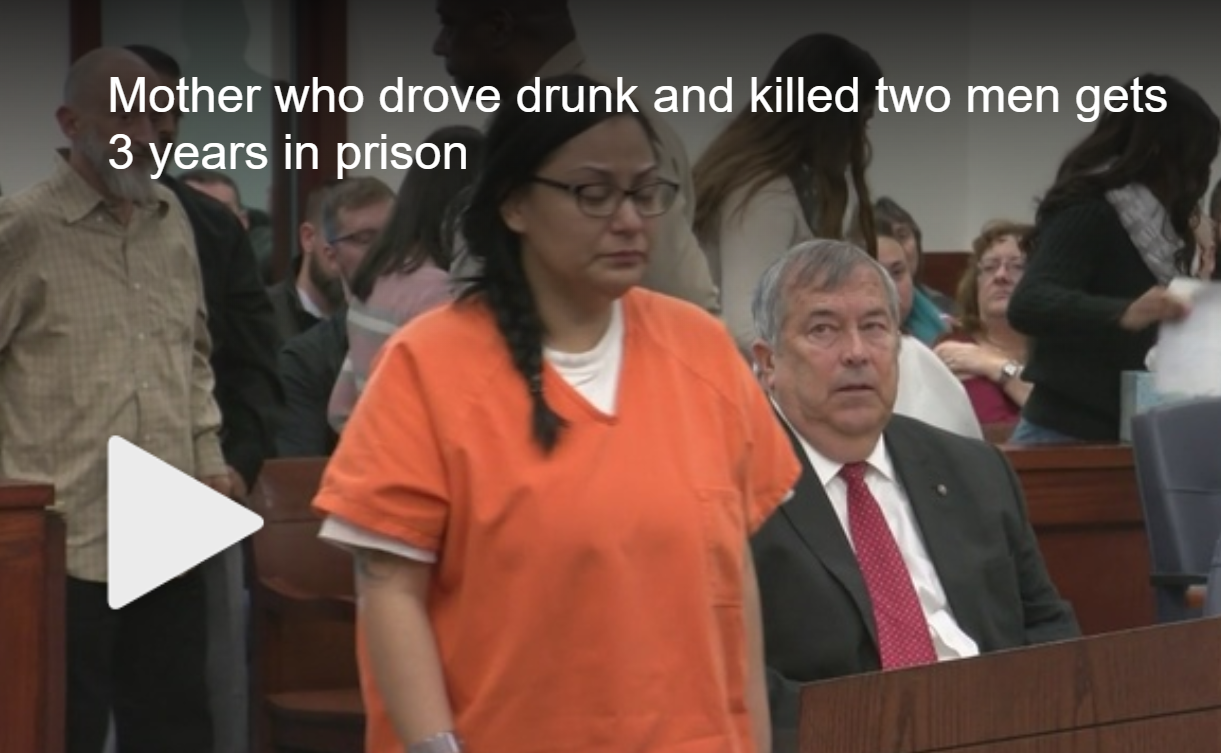By Sami Edge | sedge@sfnewmexican.com
Maybe it was about a trip to Colorado gone sour. Maybe it was deeper than that.
Whatever the case, Mark Hice and Lucas “Louie” Martinez were feuding. And the disagreement between the two Española men escalated into death threats, gunfire on a highway and, ultimately, the fatal shooting of an innocent teen.
Recorded interviews by police and other police documents tell the story of how the bad blood between Hice and Lucas Martinez led to the death of 18-year-old Cameron Martinez of Alcalde on the northbound stretch of N.M. 68 near Ohkay Hotel Casino on the evening of Oct. 4.
Hice and two of his friends are accused of shooting into a blue Subaru that they believed Lucas Martinez or his friends were in. But inside the car were Cameron Martinez and three of his friends, who had nothing to do with the dispute between Hice and Lucas Martinez.
Cameron Martinez, a recent graduate of Española Valley High School and an intern at Los Alamos National Laboratory, died from a gunshot to the head. His friends were shot as well and survived.
Hice, 22, sobbed when New Mexico State Police interviewed him after the shooting, according to an audio recording.
“I’m sorry,” Hice said, breaking down during an interview. “I just keep seeing the kid’s face.”
Hice and the other alleged shooters — Anton Martinez, 19, of Santa Cruz, and Axel Zamarron, 17, of Española — are each charged with first-degree murder. Brittany Garcia, 21, of Ojo Caliente, who police say was driving the car in which Hice rode, also faces a murder charge. Three other females — ages 23, 17 and 16 at the time of the shooting — face lesser charges.
The bad blood
It isn’t clear from police documents when Hice and Lucas Martinez, 19, of Española, first crossed paths or when their relationship began to go south.
But Christopher Hice, a brother of Mark Hice, and Michelle Mascareñas, Mark Hice’s mother, told authorities the relationship soured after Mark Hice and Lucas Martinez had gone to Colorado to pick up marijuana.
Sometime during the trip, Lucas Martinez ditched Hice, forcing him to hitchhike home, Mascareñas told police.
Christopher Hice told police his brother was angry when he returned to New Mexico and went to Lucas Martinez’s house to fight him. In the altercation, Christopher Hice said, Lucas Martinez threatened to shoot Mark Hice and bury him in the backyard of Lucas Martinez’s home, known as the “Trap.”
Mark Hice also told his brother that Lucas Martinez had threatened to put a hit on him.
In a recorded interview, a state police officer questioned that story.
“Do you think it was a drug debt or anything?” the officer asked Christopher Hice. “You think he might have ripped him off or something?”
“I don’t know. Usually, he tells me the truth,” Christopher Hice said of his brother. “But honestly, like, he’s been doing bad things and I don’t know if he was trying to cover it up saying he was going to Colorado for some weed.”
Mark Hice told police that Lucas Martinez and his friends sent him death threats and said they would kick down his door and “shoot me in my face.” They also threatened his children, ages 4 and 5, Hice said.
State police recovered social media photos that appear to show friends of Lucas Martinez mocking Hice while holding guns.
The shooting
Mark Hice told police that he hadn’t heard from Lucas Martinez in the few days leading up to the shooting. But on that day, a Thursday, as he and girlfriend Garcia were driving around Española in a black Dodge Charger, they saw Lucas Martinez’s friends tailing them in a black Cadillac Escalade.
The Cadillac followed Hice and Garcia northbound on N.M. 68, police reports say.
Around 4 p.m., an Alcalde woman reported the two cars to state police. The caller’s family was driving northbound, she told a dispatcher, when they ended up between the Charger and the Escalade near the Ohkay Hotel Casino. She saw a man reach out of the Charger with a black handgun and fire three shots “in the direction of her and her family” and the Escalade behind them.
Hice told police that occupants of the Cadillac shot first, so he fired backed as a warning.
“I got scared, so I reached out the window with it and popped three shots toward the ground,” he said. “I fired off just warning shots, just to get them away from us.”
Officers didn’t find the cars involved.
After that afternoon shooting, Hice’s mother told police, her son was “paranoid because he believed every car was out to kill him,” reports say.
Police reports say Hice and Garcia switched cars in Ojo Caliente in the late afternoon of Oct. 4 before heading back to Española.
Hice bought ammunition, he told police. Then he met up with friends, drank liquor and distributed guns to a few of them: a Colt 1911 for Anton Martinez, a Glock .45 for Zamarron and a Mac-11 for himself.
The three and their friends started to drive again in two cars and headed north on N.M. 68 when, apparently, they got spooked. They thought Lucas Martinez or his friends were on to them.
Hice told police the blue Subaru pulled up behind the cars he and his friends were in, driving aggressively, before it started to pass in the left lane.
“I got scared and thought it was them [Lucas Martinez or friends] because I saw one of their windows down,” Hice told police. “That’s when I thought it was them so all of us, it just, you know, we were in that thing, and we wanted to defend ourselves.”
Hice told police that Zamarron, who was in the car in front of Hice, started firing first. Then his car joined in.
Hice said he fired nine rounds. He said Zamarron emptied a full clip and that Anton Martinez shot once.
Zamarron remembers things slightly differently. He told police that as the Subaru was passing, he heard shots. Thinking his friend had just been shot at, police reports say, Zamarron leaned out the window of the car and started shooting.
But he told police he didn’t fire a full clip or hit Cameron Martinez with any of his bullets.
“I aimed toward the floor,” he told police, according to their written reports.
Not long after the shooting, a state police officer pulled over to help the occupants of the Subaru, which had stopped in the median on N.M. 68. He found Cameron Martinez dead and the three occupants others shot.
The arrests
In the days after the shooting, Hice and Garcia turned themselves in to state police. Police searched two homes for Anton Martinez before he turned himself in. Zamarron surrendered after police surrounded his home Oct. 7.
Zamarron told police he’d never hung out with Hice before the night of Oct. 4. Zamarron had decided to be friends with Hice because Hice did not like the people charged with shooting and killing Nicholas Kaye, Zamarron’s best friend, during a shootout at an Española gas station in June.
Police documents say Hice had been living with Anton Martinez prior to the shooting. Hice’s mother told police that Martinez had “lured Mark into the ‘gangster life’ and had Mark selling cocaine with him.”
According to police interview recordings, Anton Martinez told police he was innocent but wouldn’t answer questions without a lawyer.
In an email Friday, Anton Martinez’s defense lawyer, Stephen Aarons, said Hice “has apologized in the jail for his police statements” and that Hice’s family “is just hoping to avoid some of the consequences for the shooting.”
Aarons said Anton Martinez’s defense in court will be that he only fired one round after the group had passed Cameron Martinez’s car because “he didn’t want Hice or the girls to think he was afraid or not ‘part of it.’ ”
Lawyers for Hice and Lucas Martinez did not return calls for comment.
Anton Martinez, Hice, Zamarron and Garcia are being held in jail without bond as the cases against them wind through state District Court.
Hice’s past
In addition to first-degree murder, Hice faces charges of shooting at or from a motor vehicle, conspiracy and tampering with evidence in the death of Cameron Martinez.
It isn’t his first trouble with the law.
In 2015, court records show, Hice was charged with false imprisonment and battery against a household member when his girlfriend told police that Hice trapped her inside an apartment and shoved her away from the door.
Police found the woman with a red mark on her chest, court records show. Hice told police he was arguing with the woman and got angry when she told him she didn’t want to be with him anymore. Charges in that case were dropped.
Hice was also charged with driving under the influence of marijuana and possessing drug paraphernalia in 2017, but those charges were dropped as well.
Lucas Martinez is not facing charges related to any of the shootings on N.M. 68 on Oct. 4. But he still has legal troubles.
Lucas Martinez faces charges of aggravated battery with a deadly weapon in the shooting of an Española woman in October. He also faces charges of contributing to the delinquency of a minor after two boys reported getting shot accidentally while hanging out with Lucas Martinez and friends, drinking alcohol and handling guns in November.
One of the boys told police that Lucas Martinez “is known for carrying and distributing illegal narcotics” from his home.
The District Attorney’s Office has asked a judge to hold Lucas Martinez in jail pending his trial, arguing he is a danger to the community.
Lucas Martinez was charged in August with a felony for allegedly possessing a stolen firearm, but the case was dismissed, documents show.
Copyright 2018 Santa Fe New Mexican | Reprinted with Permission











